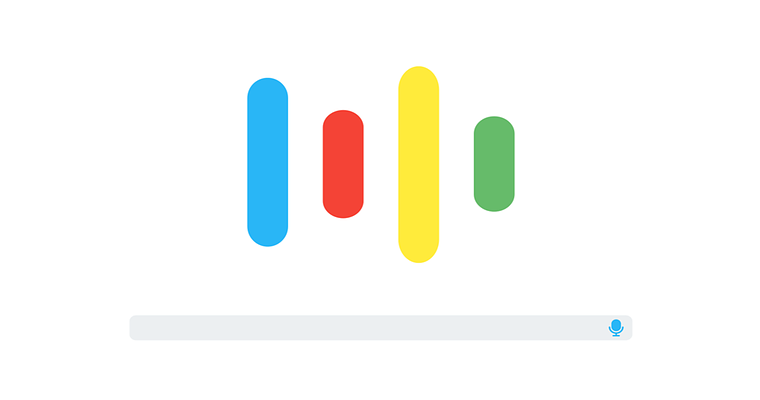How great would it be if we could gather all the awesome SEO experts in just one room to talk about search engines ranks with a focus on the best SEO tips available out there? It would be glorious! Since we don’t have a room big enough to gather all the best experts in one place, we took advantage of the online “meetings” and gathered all the up to date SEO tips into an awesome expert roundup post. That is how we got the idea of interviewing 22 renowned SEO experts and how we found out 22 awesome and unique search engine optimization tips … the best of them.

We’ve got answers from some of the brightest minds about the most actionable tips from the digital marketing world. We’ve found interesting news, insights and really helpful tips and guidelines about mobile optimization, metrics, qualitative content marketing, testing, technical SEO and customer centric websites. These 22 tips are some of the best for small businesses or large enterprises. Make sure you get the best of them.
Grab a coffee, sit comfortably and start reading the next list with 22 unique SEO tips backed by 22 renowned SEO experts that will make your search traffic bloom.
- Understand That SEO Is Not Just About Rankings by Phil Frost
- Optimize Your Content for Your Customers and Not for the Search Engines by Omi Sido
- Understand How Your Site Is Actually Performing Away From Vanity Metrics by Danny Denhard
- Don’t Underestimate the Power of Creative Technical SEO by Paul Shapiro
- Have Content Deliberately Written to Be Highly Linkable by Sujan Patel
- Do Not Underestimate How Important “Branding” Is to SEO by Dixon Jones
- Build Your Website on a Solid Foundation of Data and Keyword Research by Trond Lyngbø
- Spend the Time and Money to Have Your Site Analyzed in Terms of Its Existing SEO by Julie Joyce
- Make the Best Page on the Internet for Your Topic by Andy Crestodina
- When It Comes to Link Acquisition You Need to Be Looking for Trust by Tim Grice
- Invest Time and Effort into Developing a Link Earning Strategy by Caleb McElveen
- If Everyone Else Is Zigging, Then Zagging Is a Strategic Opportunity by Greg Jarboe
- Invest More in Content by Eric Enge
- Run Your Own SEO Tests Across Different Search Categories by Carl Hendy
- Perform an In-Depth SEO SWOT Analysis by Marcus Miller
- Understand What Your Targeted Audience Might Be Looking For by Bill Slawski
- Test Longer Strategies over Tactics and Measure Each Step of the Way by Bill Sebald
- Make Sure Your Site Is Mobile Friendly by Andy Drinkwater
- Create Your Own Websites and Experiment Things Risk-Free by Mark Porter
- Focus on Content Quality by Rishi Lakhani
- Find a Way to Create Attention by Patrick Hathaway
- Hone Your Technical SEO Skills as Much as Possible by Dan Leibson
We need to mention that all our cool experts had to answer just one-question interview:
If you were to recommend just one SEO tip, what would that be?
1. Understand That SEO Is Not Just About Rankings
I’ve talked with many business owners that think ranking high in Google is all you need to be successful. The reality is that SEO is just one of many tactics to drive prospective customers to your website. Sure, ranking high in Google is great, but it’s also worthless if you don’t have a website that is set up properly to convert that traffic into leads and sales. Plus, you won’t rank high for long unless you have proper tracking in place and a process to monitor and analyze your SEO efforts. As you can see, SEO is not just about rankings; it’s also about website conversion rate optimization and website analytics and tracking. That’s important to understand before you start to invest in SEO.
2. Optimize Your Content for Your Customers and Not for the Search Engines
Producing content that’s irrelevant and insignificant to your audience’s wants and needs leads to only one thing – people stop taking you seriously. People click on your links in the SERPs but they do not interact with your website and leave quickly – wasted opportunity to turn visitors into customers.
So how do I find what my buyer persona (not to be confused with ‘buyer profile’) is looking for?
Glad you’ve asked, so let me give you some actionable tips. Finding questions that people are asking about your products or services.
A very good place to start is Quora. I just went there and typed something very uninspiring like “carrots” (Writing content for a boring industry? No Problem).
Some of the questions I get:
- Why are carrots good for your eyes? Does eating carrots improve your eyesight? How?
- How many carrots should I eat a day?
- What else besides carrots can help your vision?
Another favorite place to go would be Answer The Public.

Last but not least, take data from your internal Site Search. All you have to do now is to align a question with a keyword that would bring traffic to your website. To do that just drop a question in the Google keyword planner and you will be presented with an opportunity.

Note: Stay focused and only choose the keywords that answer your original buyer’s persona question.
I am sure you already know where I am going. You’ve got the question and you’ve got the targeted keyword. All you have to do now is give an answer in the form of a blog article or video.
We’ve started with the customer in mind and ended up with a content that’s relevant to YOUR audience and, at the same time, well optimized for the search engines.
3. Understand How Your Site Is Actually Performing Away From Vanity Metrics
If you track for the right KPIs, auditing will supply you with ongoing changes and help you focus on making the highest priority changes for you to hit KPIs and plan for the future.
4. Don’t Underestimate the Power of Creative Technical SEO
People often neglect testing in SEO, mostly because it’s not easy, but optimizing CTR is a way to get some huge wins. Check out how Etsy is doing it or this recent look at approaches from Wayfair and their learnings.
I’m talking about coming up with novel ideas and analyses that help move the needle but are less about copywriting and more about technical proficiency. A couple examples: digging deep into semantic keyword research and data mining or dynamically populating title tags using the Google Search Analytics API.
5. Have Content Deliberately Written to Be Highly Linkable
Highly linkable content is content written on a broad enough topic that you can work it into guest posts and other link opportunities naturally, without the article having to be directly related to the content you’re linking to.
For example, I wrote a big piece on customer delight – a thorough guide on how to make your customers happy at every point in your relationship. I’ve been able to link to this piece within articles on topics ranging from marketing and sales to operations and employee management. Having a few of these kinds of pieces means you’ll never miss an opportunity to link to your content.
6. Do Not Underestimate How Important “Branding” Is to SEO
Do not underestimate how important “branding” is to SEO.
7. Build Your Website on a Solid Foundation of Data and Keyword Research
Your goal should be to build a customer-centric destination that works 24/7 at attracting fresh business.
My company, Search Planet, specializes in E-commerce SEO. I often see even large e-commerce Web shops leak revenue and profit because they’ll mirror their own needs and organizational structure online, instead of focusing on their customers’ needs. So the best prospects don’t find them in search results. Or when they do, they won’t buy from them – but go to their competitors instead.
By transforming your online presence to be entirely customer-focused, you’ll cut through the clutter, dominate search engines, draw a flood of targeted traffic to your website, and make more sales.
8. Spend the Time and Money to Have Your Site Analyzed in Terms of Its Existing SEO
You could have all kinds of issues that you aren’t aware of and rather than just trying to throw links at the site or find someone to write better content for your home page, put some focus on doing a thorough SEO audit.
9. Make the Best Page on the Internet for Your Topic
So here’s how I think about SEO:
- If you made the best page on the internet for your topic …there are 2000 Math PhD’s trying to HELP you;
- If you didn’t make the best page on the internet for your topic …there are 2000 Math PhD’s trying to STOP you.
Of course, it’s not enough just to make a great page. But it’s step one. Combine this effort with a clear understanding of off-site SEO, links and basic understanding of how to increase your domain authority and everything is going to work out well for you.
10. When It Comes to Link Acquisition You Need to Be Looking for Trust
The landscape has changed so much, we’re seeing a lot more weight shifting towards user experience, and link building has become a game of trust.
SEOs need to forget about them; there isn’t a metric out there that gives a true reflection of the value of a link, we have come across so many links with good domain authority or domain trust that we would class as toxic websites. When it comes to link acquisition, you need to be looking for trust, and you can only do this through a manual review; is this website the kind of website Google would trust and want to pass value through, is it a trusted source of information? You should then focus on how your links appear on that site, links that look like ads, in the footer or sidebars are going to be less likely to pass value in the long term.
We’re seeing a huge increase in the influence site speed has on rankings. We have run a few tests now with clients and are seeing a direct and almost immediate correlation with speed improvements and an uplift in rankings. Make it a priority, work with the development team and ensure your website is as fast as possible.
11. Invest Time and Effort into Developing a Link Earning Strategy
Do not take any shortcuts to buy or build low-quality links. While links are still a ranking factor, that is no longer their sole purpose. An effective link will provide the opportunity to improve three things; your traffic, your brand, and build trust. These are the links that should be your focal point. These types of links are found in building relationships with relevant websites and companies, creating valuable (not just quality) content, and a consistently having a giving mentality. Though it takes times, the reward will be worth it.
12. If Everyone Else Is Zigging, Then Zagging Is a Strategic Opportunity
If you just want one SEO tip, then let me share the insight that led me to co-found SEO-PR back in 2003. Hundreds of SEOs optimize web pages hoping that they will get a high ranking in Google search results. And many of them do a great job. But only a small handful optimize news stories, blog posts, or press releases hoping that they will get a high ranking in Google News search results.
Now, the Google News algorithm is similar but different than the Google algorithm. Why? Because inbound links aren’t as strong a signal of the importance of a story. This puts a premium on relevance. But, the big mistake that many SEOs make is assuming that the popularity of keywords used on Google is the same on Google News. They often aren’t. You can see this for yourself by using the Google Trends Explore tool. The default result for any keyword will be web search interest. But you can use the drop down menu to see news search interest. And the trends are often different.
In addition, Google says that 16% of searches that it sees every day are new. Well, ask yourself: “Where do baby search terms come from?” And you’ll discover that the stork doesn’t bring them. They are generated by the “news.” So, these are search terms that your competitors haven’t been optimizing their web pages to get high rankings for 15 years. So, you have a better shot of getting your news stories or blog posts (if you’re a news source) and even your press releases to get high rankings for than you would for yet another web page.
Now, admittedly, your ranking in Google News may only last a day or two. But, for near term news and events, this is the opportunity to drive traffic to a relevant landing page on your website. Now, the links in press releases are no-follow, so there is no “link juice” in them. But, they can still drive visitors to a page with more information — if it’s relevant and important. We used unique tracking links in four press releases for Southwest Airlines to generate $2.5 million in ticket sales. And when the CFO asked how we knew that they came from the press releases, we showed him that the tracking parameters on the links weren’t used by any other element of the company’s marketing. And when he suggested that we were merely harvesting interest that had been generated by the company’s excellent TV advertising, we showed him that the releases were for new service to cities where Southwest Airlines had never run an ad. He asked what else we knew. Well, we’d analyzed the database of people who had purchased tickets and found that two-thirds had never flown Southwest Airlines before and that they were generally purchasing round-trip tickets for two people.
Now, here’s the punch line: Part of why we got such strong response was the use of the term “low airfare” in the headline and lead paragraph of the press release. But the other part was the actual price of a one-way ticket in the headline — which actually was a “low airfare.” So, it isn’t just about putting a keyword in the headline and lead paragraph.
13. Invest More in Content
Here at Stone Temple, we have built up numerous case studies of work we’ve done where we have more than doubled traffic to the pages we work on, simply by making improvements to the content on those pages.
14. Run Your Own SEO Tests Across Different Search Categories
15. Perform an In-Depth SEO SWOT Analysis
It is always tough to provide a generic yet actionable SEO tip that folks have not seen a million times before. What is right for a local business is not right for a national business. What works for a B2B company won’t work for a B2C eCommerce store.
If you create a basic SWOT grid and start to detail your strengths, weaknesses, opportunities and threats, you can start to get a better idea what kind of SEO you need. This is exactly how we work at Bowler Hat and even our SEO service page details how you need to identify what kind of SEO is right for you.
As an example. If a weakness was domain authority, then you can focus on that area. Often businesses will have competence in one area or another. They may be great on page SEO but lack keyword research skills. You may have all the content you need but lack authority. It is very easy to focus on your strengths – this approach forces you to confront your weaknesses.
So my tip – identify your current situation and focus on your weaknesses.
16. Understand What Your Targeted Audience Might Be Looking For
A lesson I learned from one of the highest level corporate law judges in Delaware was to “be responsive” – Make it as easy as possible for people to answer you and to say yes to something that you are asking. This lesson translates well into SEO also.
What words they might use when they search for it, how they might construct their query and what words they will expect to see on your pages. Also what questions they might have about the goods or services offered on that website; and the answers to those questions, so that you can provide answers, and begin the journey towards having them become customers of your site.
Being responsive means building a website for your audience that makes it easy for them to learn about what you are offering, and easy for them to purchase from you. Being successful at SEO means building websites for your client’s audience.
17. Test Longer Strategies over Tactics and Measure Each Step of the Way
If I were pressed to give just one SEO tip, it’s to not expect a quick return today (generally speaking).
Try testing longer strategies over tactics, and measure each step of the way.
Google has made huge changes that altered the way SEOs do their work. Many of the historic, quick-hitting tactics we wrote into our playbooks have either been devalued by Google or have little weight today. SEO isn’t for the weak-hearted – expect that it could take a while to move into a position that starts to hit your goals. It takes diligence, trial and error, and patience.
Google wants to rank the sites that earn their users’ satisfaction. Google isn’t as easily influenced, thanks to new search models and AI that are designed to truly understand the value of a page the way a user would.
18. Make Sure Your Site Is Mobile Friendly
Google is testing a new algorithm called Mobile First and as long as tests go well, expect this to be rolled out. The reason it is so important is that it will change how Google ranks websites.
At the moment, Google uses your desktop site to rank you on desktop searches – Mobile First turns this on its head because it will base your desktop rankings on your mobile site.
So if your mobile site is very poor, or even if you don’t have one, expect mobile first to cause you problems.
19. Create Your Own Websites and Experiment Things Risk-Free
When I started out in the industry I was obsessed with consuming every SEO article that was published, but ultimately things really took off when I started launching websites. None of them are particularly successful, but they allowed me to try things risk-free without jeopardizing a client’s campaign. I was able to freely dive into onsite SEO, and I also dabbled in the ‘dark arts’ of link building which of course led to one of my sites being penalized..all fun and games!
In order to truly understand how a website works I think it’s important to have some hands on experience, and getting that is easier than you might think. WordPress websites are simple to set up, and building up a bit of traffic can also allow you to experiment with advertising, log file analysis and more!
20. Focus on Content Quality
It seems that the Google algo is getting better and better at pulling out content and really starting to understand how that content answers a query.
Traditionally we used to talk about “content” and used to hammer in content in areas where really there was no structure, for example on product category landing pages in eCommerce websites. That used to be good enough to dominate the short, mid and long tail of queries as long as you had a decent volume of links.
My experiments have shown that although you may be able to dominate these queries by link volume alone, you can actually rank better with fewer links if your content quality is decent. And quality means ease of reading, supplying specific answers, breaking it down into digestible pieces, and even semantically layering it. Some of my small affiliate sites are dominating spaces where traditionally massive e-commerce sites used to occupy.
21. Find a Way to Create Attention
22. Hone Your Technical SEO Skills as Much as Possible
While SEO is a relatively broad discipline, the technical aspects of it are relatively opaque to many, and there is no shortcut for. On top of that, it is a skill that will likely always be in demand.
Conclusion
On the long run, search engine optimization will always work, it is just metamorphosed into different forms and approaches. The SEO experts involved in this article said that every business owner should focus on the customer, valuable (not just quality or unique ) content, testing, in-depth analysis, link earning, mobile responsiveness, creative technical SEO while keeping an eye on the ranking signals and the quality backlinks. There are a lot of Youtube videos or “ultimate guides” to improve your SEO. The truth is that some grass-root pieces of advice directly from the professionals in the field are always the SEO tactics you can learn from.
The best place to hide a dead body is page 2 of Google search results. Because nobody might go to the second page in SERP when they look for something. That’s why, from time to time, you need take into account these kind of actionable SEO tips (directly from SEO experts) and rank higher in Google. Lots of people want to receive organic traffic, write relevant fresh content, have fast loading speed, earn quality links, have authority sites and no Google penalties. Having an SEO strategy, get registered with Google Search Console, Google Analytics, Google Adwords, and other digital marketing tools might help you outrank your competitors and become number one. But it depends on you to do the things right; if you follow these SEO techniques backed up by experts you might have bigger chances of success.
Make sure you pay attention to these more advanced SEO tactics but don’t forget about the basic SEO tips for your website, such as an internal link strategy, increasing social shares for brand awareness, building relevant links for your website optimizing anchor text, crawling your site to fix broken links, get keyword ideas, create valuable and relevant content on your site, easy to read blogs with popular content, onpage SEO optimization for long tail keywords, image alt text, compelling meta descriptions and unique titles and descriptions. Also bear in mind to integrate social media into the whole SEO strategy, because it is an important piece of the pie. This blog post is a collection of actionable SEO tips for beginners but also for professionals and we hope you will take full advantage of them.

https://cognitiveseo.com/blog/13605/seo-tips/
On – 26 Apr, 2017 By Andreea Sauciuc
source
https://andlocal.org/22-unique-seo-tips-backed-by-22-renowned-seo-experts/















